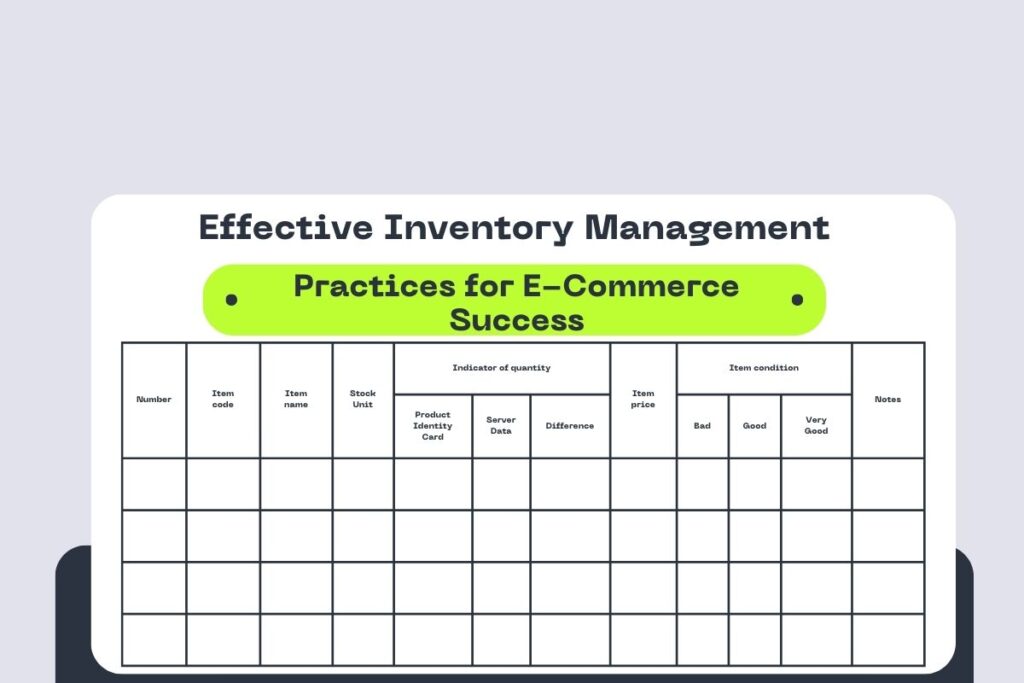If you want to know more about e-commerce inventory management and its role in driving profitability, keeping your customers happy, and growing your business, keep reading. Hone these tactics to lower costs, prevent stockouts, and grow your online business sustainably. Innovative technology enhances efficiency, and efficient inventory strategies help businesses succeed in a competitive market.
Top Ecommerce Inventory Management Practices
To stay ahead in today’s fast-paced digital marketplace, proactive inventory management is a must. By embracing modern inventory management techniques, not only will you ensure that the products are available, but you will also optimize the efficiency in the warehouses, reduce waste, and improve customer satisfaction. These practices use AI-powered insights and learn methodologies to optimize operations and profitability.
- Demand Forecasting: Use tools like Brightpearl to predict sales trends.
- Analysis: Focus on leveraging high-value items instead of low-turnover stock.
- Dropshipping: Partner with suppliers to save on storage.
- Automation Platforms: Companies such as Shopify automate up to 70% of inventory functions for small businesses.
- Strategic Management of Inventory: In the landscape of ever-growing competition, order fulfillment and long-term profitability heavily depend on the management of inventory.
For businesses looking to grow and operate efficiently, having strong e-commerce inventory management practices in place is essential. In the 2025 context, using AI, machine learning to accurately predict consumer demand, and techniques such as Analysis will help to identify these revenue-generating products.
Working with suppliers instead of holding inventory will always have its place in the market, and automation platforms minimize the overhead of performing repetitive duties.
Such practices improve the efficiency of operations and provide an enabling environment for businesses to respond to market changes quickly. With e-commerce inventory management, companies can ensure that the required products are present at the right time, enhancing customer satisfaction. Furthermore, these innovative practices help avoid deadstock, save cash, and boost cash flow.
Essential E-Commerce Inventory Management Software Solutions
The landscape of digital commerce is transitioning rapidly; hence, monitoring in real-time and bottleneck control are a must. By investing in advanced e-commerce inventory management software, you will get accurate analytics, multi-channel integration, and optimized operations. These tools help make the tough inventory problem much more manageable and reduce human error greatly while providing a significant improvement in accuracy.
- TradeGecko: Aggregates sales from channels (Amazon, eBay, WooCommerce).
- Cin7: Warehouse management system integrating B2B and B2C.
- Zoho Inventory: New business at a price point with barcode scanning.
- Cloud Efficiency: According to 2024 logistics data, 45% of human errors are eliminated by cloud-based tools.
Systems such as TradeGecko, Cin7 and Zoho Inventory, are modern systems that not only integrate with e commerce inventory management software but also offer advanced analytics and reporting tools. By using real-time data, organizations can quickly solve supply chain issues and adjust inventory to the ever-changing market conditions. These innovations enable businesses to take data-driven decisions in real-time.
All told, these efficiencies translate to significant cost savings and prepare organizations to scale operations efficiently in a competitive marketplace. With e-commerce inventory management, companies can incorporate innovative practices that optimize resource allocation and gain valuable insights to guide strategic planning and operational improvement, ensuring sustained growth and adaptability.
This macro-perspective on inventory management means that a business can lead the technology queue across multiple channels, making for sustainable, scalable, powerful growth.
Tips to Use in E-Commerce Inventory Management for Startups and SMBs
These inventory management tips for e-commerce will lead you to a framework where having efficient inventory protocols is the make-or-break of startups and small-to-medium enterprises. Safeguards include regular cycle counts, sound safety stock practices and the use of multiple suppliers. Such an implication leads to better customer experience, a more responsible growth, and a competitive edge over others in an ever-changing ecommerce landscape.
- Cycle Counts: Weekly audit of 10% of stock compared to yearly physical counts.
- Safety Stock: Maintain 10-20% additional stock for demand surges.
- Supplier Diversification: No more delays with other vendors.
- Management Impact: Proactive management reduces stockouts by 30% and increases returns.
Every unit matters in small businesses and startups, which is why even basic e-commerce inventory management is a must. Regular cycle counts and sufficient safety stock are well-known methods to maintain smooth operations. Diversifying the suppliers also minimizes this risk by ensuring continuity of the supplies.
When you implement each of these suggestions diligently, it will lead to a smoother supply chain and stronger customer loyalty, which means more success for your e-commerce business.
Moreover, small enterprises can proactively handle inventory changes by utilizing contemporary inventory tracking platforms and automated alerts. With e-commerce inventory management, this proactive strategy reduces losses and increases responsiveness to market trends, as a result, ensuring that each order is fulfilled accurately and on time while optimizing efficiency.
Conclusion
E-commerce inventory management is what sets successful brands apart from those that struggle. Other Solutions: Tapping into AI forecasting, Stock levels optimization, and Software automation are some innovative capabilities needed to keep businesses agile and growing. Reduce waste and maximize consumer satisfaction today, and promote future-proofing your business now.

